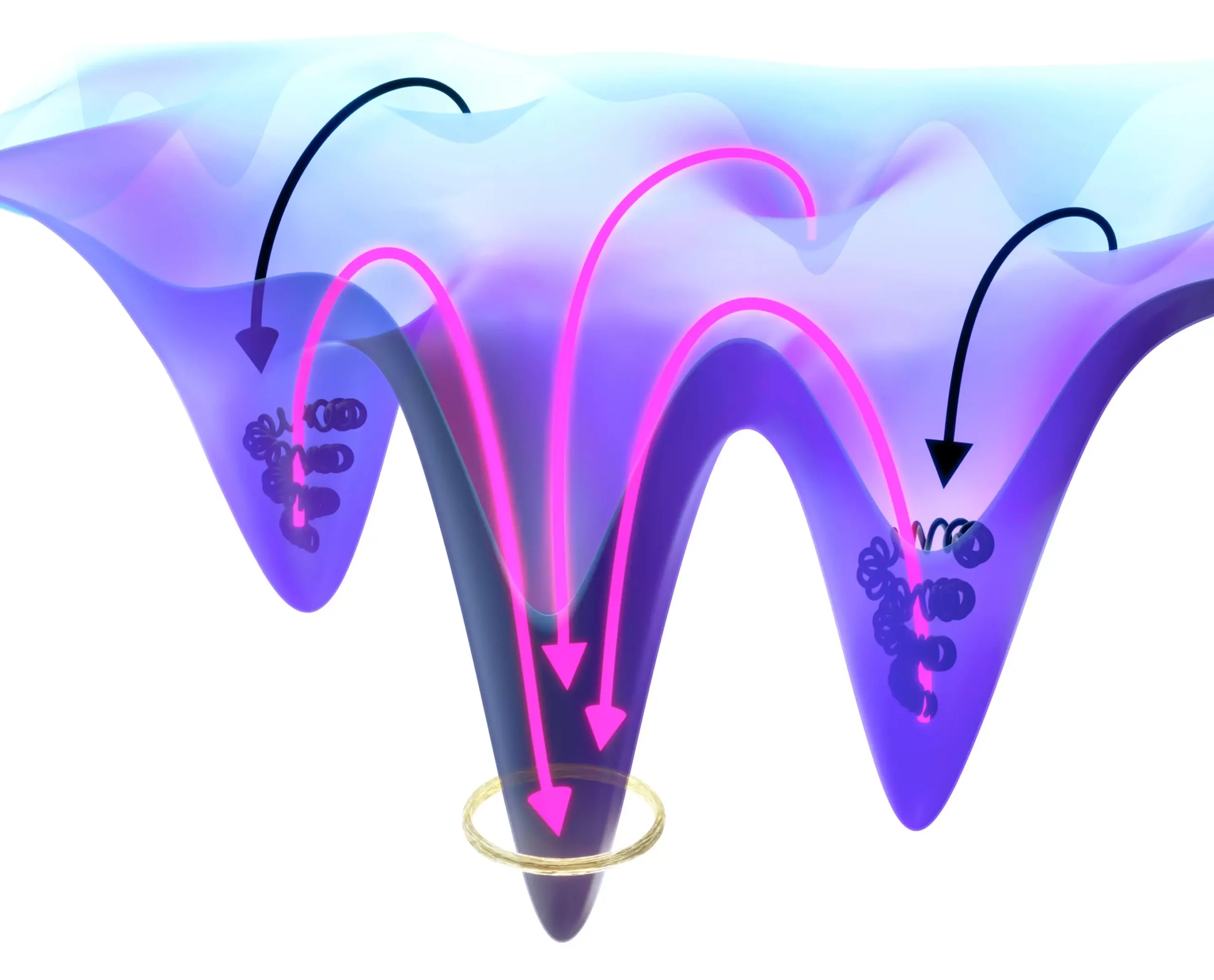In the intricate world of physics and biology, systems often gravitate toward states of minimum energy, settling into static configurations that hinder further progress. Imagine a ball nestled in a hollow on an uneven surface—it can’t spontaneously escape without added energy. Similarly, in biological processes like protein folding, molecules can get stuck in local energy minima, impeding their optimal function. This phenomenon, known as kinetic trapping, poses significant hurdles in understanding natural systems and engineering artificial ones.
Traditionally, overcoming such energy barriers has required external energy inputs or complex interventions. However, recent insights from researchers at the Max Planck Institute have unveiled a fundamentally different approach rooted in the dynamics of non-reciprocal interactions. By harnessing these asymmetric forces, it is possible to facilitate self-organization and structural formation, even when systems are seemingly locked in static equilibrium.
Non-Reciprocal Interactions: Nature’s Dynamic Strategy
Non-reciprocal interactions are phenomena where mutual influences between molecules are asymmetric. Unlike classical Newtonian forces that are equal and opposite, these interactions resemble predator-prey relationships: one molecule may attract another, while the other simultaneously exerts a repulsive force. Such behaviors inject a level of dynamism into otherwise static assemblies, driving continuous structural evolution.
The key discovery by Metson, Osat, and colleagues is that these asymmetric forces enable systems to surmount energy barriers that would otherwise trap them in local minima. Rather than expending external energy, the inherent non-reciprocity introduces a feedback loop: molecules dynamically chase and evade each other, producing a spontaneous organization process akin to biological pattern formation. This process has the potential to imitate the highly optimized functions of enzymes and other molecular machines, which currently require billions of years of evolution to perfect.
Implications for Engineering and Biological Understanding
This breakthrough reframes our understanding of self-organization in active matter. Instead of viewing energy barriers as insurmountable chokepoints, scientists can now see them as navigable landscapes when equipped with the right interaction dynamics. The potential applications are vast: from designing smarter drug delivery systems to creating self-assembling nanomachines capable of adaptive functions.
Particularly compelling is the idea that non-reciprocal interactions could be engineered deliberately to mimic biological efficiency. Much like enzymes that accelerate reactions by overcoming energetic hurdles, artificial molecular systems that leverage asymmetric interactions could operate with minimal external energy input. Such systems could revolutionize fields like nanotechnology, materials science, and synthetic biology, where energy efficiency and dynamic adaptability are paramount.
Ramin Golestanian’s statement reinforces this optimism, suggesting that these mechanisms can reach the sophistication of biological enzymes, but through design instead of evolution. This alignment of natural principles with engineering ambitions heralds a new era where we could finally replicate—and even surpass—nature’s ability to self-organize and adapt.
Embracing the concept of non-reciprocal interactions opens an innovative pathway to overcoming long-standing challenges in complex systems. It offers a paradigm shift: instead of fighting against the system’s inherent energy landscape, we can gently coerce it into motion—unlocking unprecedented possibilities in science and technology.

